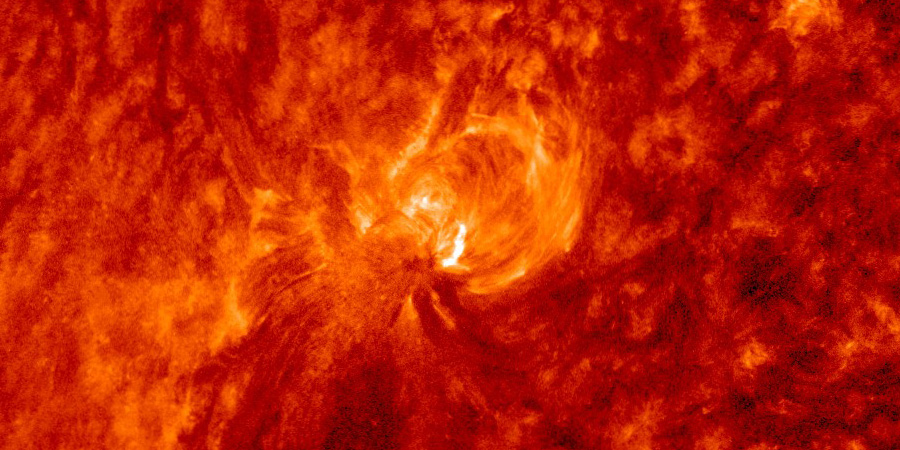Faint halo coronal mass ejection
Wednesday, 8 May 2019 15:47 UTC

A faint halo coronal mass ejection with a possible earth-directed component has been detected in coronagraph imagery from SOHO/LASCO.
The coronal mass ejection became first visible yesterday during the early hours of 7 May. Source of this plasma cloud is continues activity in sunspot region 2740 but a specific event is hard to pinpoint. However, with the help of STEREO Ahead we do know that this coronal mass ejection is a front side event from a source facing Earth.
The coronal mass ejection is really faint and only really shows itself with the help of difference imagery. Below you will find an animation of such imagery from SOHO/LASCO C2. You can see the faint outline of an expanding halo which signals that this plasma cloud could have an earth-directed component. The cloud is faint and slow so do not get your hopes up too much but it will be an interesting event to follow. Most of the cloud is heading well north-west and only a faint outline can be seen expanding towards the south east and with a speed of about only 400km/s, the plasma cloud is not much faster than the ambient solar wind. A glancing blow is possible from this event but we should at most expect a minor increase in geomagnetic activity at Earth. Geomagnetic storming is very unlikely. With a speed of about 400km/s, the cloud will likely arrive at Earth somewhere late on 10 May which would be this Friday or early on 11 May.

Animation: A faint halo coronal mass ejection as seen by the SOHO/LASCO C2 coronagraph instrument.
Thank you for reading this article! Did you have any trouble with the technical terms used in this article? Our help section is the place to be where you can find in-depth articles, a FAQ and a list with common abbreviations. Still puzzled? Just post on our forum where we will help you the best we can!
Latest news
Latest forum messages
More topicsSupport SpaceWeatherLive.com!
A lot of people come to SpaceWeatherLive to follow the Sun's activity or if there is aurora to be seen, but with more traffic comes higher server costs. Consider a donation if you enjoy SpaceWeatherLive so we can keep the website online!

Space weather facts
| Last X-flare | 2024/12/08 | X2.2 |
| Last M-flare | 2024/12/26 | M3.0 |
| Last geomagnetic storm | 2024/12/17 | Kp5+ (G1) |
| Spotless days | |
|---|---|
| Last spotless day | 2022/06/08 |
| Monthly mean Sunspot Number | |
|---|---|
| November 2024 | 152.5 -13.9 |
| December 2024 | 115.2 -37.3 |
| Last 30 days | 118.5 -39.1 |


